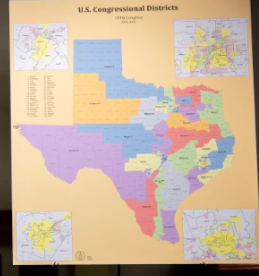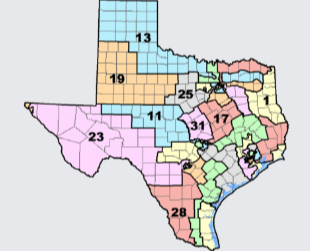How mid-decade map wars could decide control of Congress before a single ballot is cast.
What to Know:
- Texas Republicans triggered the frenzy by pushing through a mid-cycle map projected to add up to five GOP seats.
- New York Democrats, led by Gov. Kathy Hochul, are openly weighing tit-for-tat redraws despite constitutional limits.
- Governors in states like Ohio and California are testing whether courts or commissions can actually stop them.
- With the Supreme Court hands-off on gerrymandering, state judges are now the only referees.
- The House majority hangs by just a handful of seats, making every new line an existential fight for 2026.
For decades, redistricting was a once-a-decade ritual, bound to the Census and settled with maps that held until the next count. Not anymore. In 2025, the gloves are off. What started with Texas Republicans muscling through a new set of maps in a special session has now set off a national frenzy.
Blue-state governors, once content to rail against GOP gerrymanders, are suddenly considering tit-for-tat redraws of their own. The ongoing redrawing of electoral maps is actively reshaping the midterm political landscape, a process that could determine which party controls the House of Representatives for the duration of Donald Trump's second term.
Texas vs. New York: The New Normal
Republican Gov. Greg Abbott triggered the escalation by calling a special legislative session to ram through a map designed to pad GOP gains. Analysts suggest Texas could net up to five additional Republican seats.

Redistricting maps of Texas; Brandon Bell/Getty Images
Not long after Texas Republicans finalized their mid-decade congressional map, New York Gov. Kathy Hochul made clear she isn’t taking GOP maneuvers lightly. Speaking at an event in Buffalo, Hochul said she is watching developments “very closely” and hinted that Democrats could consider their own redraw.

New York Gov. Kathy Hochul, via WikiCommons
“All’s fair in love and war,” the governor remarked, highlighting that if red states are willing to bend norms to gain an edge, blue states may feel compelled to respond. Her comments mark the first time Hochul has publicly opened the door to mid-cycle redistricting, an option her office has already discussed with House Minority Leader Hakeem Jeffries’ team.
Legal Limits and Political Pressure in New York
Any move by New York Democrats would be complicated by the state constitution, which explicitly limits redistricting to once every ten years based on census data. Courts forced New York to redraw its map as recently as 2024, and another legal challenge would likely be necessary to reopen the process before the 2026 midterms. Even so, Hochul’s willingness to publicly float the idea signals just how high the stakes have become.

New York’s current congressional map. Source: Redistricting & You: New York
For Jeffries and other national Democrats, the calculus is straightforward: Republicans are working aggressively in states like Texas and Ohio to secure a durable House majority, and Democrats risk ceding ground if they don’t respond in kind.

Ohio’s congressional districts. Source: Redistricting & You: Ohio
But Hochul also faces pushback from within her own party. New York Democratic Chair Jay Jacobs cautioned that “changing the rules of the game” could further erode trust in democratic institutions, warning that the constitution leaves little room for creative interpretation.
A Mid-Decade Redistricting Explosion
Texas and New York are only the headline acts. Ohio Republicans are maneuvering to solidify their dominance after court battles left maps in flux. In California, Gov. Gavin Newsom has raised the possibility of scrapping commission-drawn maps altogether if Democrats feel the need to balance out GOP gains.
Redistricting experts are warning that the country is entering “uncharted waters,” with both parties using commissions, legislatures, and litigation as weapons. Mid-decade redistricting has happened before, but rarely on this scale. The last notable instance was Texas in 2003, when then–House Majority Leader Tom DeLay engineered a mid-cycle redraw that netted Republicans six seats. That was seen as an aberration. Today, it’s looking more like a blueprint.
Why Governors Think They Can Get Away With It
Weakened norms explain the sudden surge in map-making. The Supreme Court has largely washed its hands of partisan gerrymandering, leaving state courts and constitutions as the only real guardrails. Governors anticipate a court decision that could significantly influence Congress.
Hochul is already coordinating with House Minority Leader Hakeem Jeffries, who has made clear Democrats need to keep Republicans “on the run”. On the GOP side, Abbott and Ohio’s Republican leaders argue they are simply aligning districts more closely with political realities. The language is legalistic; the intent is nakedly partisan.
What It Means for 2026
The House is hanging by a thread, with just a handful of seats separating Republican control from a Democratic majority. That makes every map fight existential. Texas alone could give Republicans the cushion they need to lock in control through 2026. New York, with its cluster of swing seats in Long Island and the Hudson Valley, could do the opposite. In states where margins are razor-thin, a single redrawn district line can shift the balance of power.
Beyond Congress, these battles are reshaping voter trust. Each side accuses the other of “rigging the rules,” and watchdog groups warn that the escalating tit-for-tat is corroding the already fragile legitimacy of American democracy. Even some Democrats are queasy. New York’s party chair Jay Jacobs cautioned that constant redistricting “changes the rules of the game” and risks undermining democracy itself.
Wrap Up
The courts remain the final guardrail, but challenges take time and election calendars move quickly, meaning many disputes may not be resolved until long after 2026. With the Supreme Court stepping aside on partisan gerrymandering, state judges are left as the only referees.
Nonpartisan groups warn the constant map-drawing is eroding trust, and with both parties now redrawing boundaries mid-cycle, the old norms of restraint have collapsed. What began as a Texas power grab has become a national frenzy, where governors and legislatures use every legal tool available to reshape the battlefield. The maps themselves are now the first contest of the midterms, and the outcome will determine who controls Congress.




.png)
